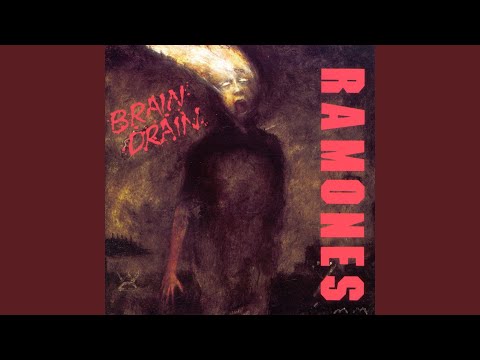Contents:


In other words, it is used to value stocks based on the future dividends’ net present value. If the company’s dividend payment funds are significantly less than the FCFE, then the firm is using the excess to increase its cash level or to invest in marketable securities. Finally, if the funds spent to buy back shares or pay dividends is approximately equal to the FCFE, then the firm is paying it all to its investors. Suppose a company with a net income of $2,000, capital expenditure of $600, non-cash expense of $300, and an increase in working capital of $250.
Micron Vs. Nvidia – One Stock Is Clearly Better – Seeking Alpha
Micron Vs. Nvidia – One Stock Is Clearly Better.
Posted: Mon, 21 Nov 2022 08:00:00 GMT [source]
A common starting point for calculating it is Net Operating Profit After Tax , which can be obtained by multiplyingEarnings Before Interest and Taxes by (1-Tax Rate). From that, we remove all non-cash expenses and remove the effect of CapEx and changes in Net Working Capital, as the core operations are the focus. Free Cash Flowcan be easily derived from the statement of cash flows by taking operating cash flow and deducting capital expenditures.
As a result, net borrowing includes the company’s debt borrowings less debt repayments to arrive at the net amount. Assuming no preferred shareholders, the difference between FCFF and FCFE is the cash flow to the suppliers of debt. The cash flows that arise from transactions with debtors are deducted from FCFF to arrive at FCFE. Since FCFE is intended to reflect the cash flows that go only to equity holders, there is no need to add back the interest, interest tax shield, or debt repayments. Instead, we simply add back non-cash items, adjust for the change in NWC, and subtract the CapEx amount.
Calculate FCF using Free Cash Flow Formula – Step by Step
They are categorized as current assets on the balance sheet as the payments expected within a year. Cash Flow From InvestmentsCash flow from investing activities refer to the money acquired or spent on the purchase or disposal of the fixed assets for the business purpose. For instance, the purchase of land and joint venture investment is cash outflow, while equipment sale is a cash inflow.
Normal exhales after close call with Wheaton-Warrenville South 42-34 – The Pantagraph
Normal exhales after close call with Wheaton-Warrenville South 42-34.
Posted: Tue, 27 Dec 2022 08:00:00 GMT [source]
In such cases, it is impossible to value the company based on the Dividend Discount Model . Another disadvantage of using the DDM is that dividends paid by the company might not exactly reflect the true picture of the business capacity of the company. To value a company, one of the most popular methods is to use the discounted cash flow method. Traditionally, the dividends paid by the company are used as a proxy for the cash flows of the business. However, the dividends do not truly reflect the amount of cash flow the business can generate for its shareholders.
Free fcfe formula Flow to Equity is an alternative to the Dividend Discount Model for estimating the value of a firm under the Discounted Cash Flow valuation model. Dividend Discount Model of valuation can be used only when a firm maintains a regular discount payout. But there are multiple companies that do not pay dividends regularly. Instead, they might reinvest the excess cash generated, back in the business either to sustain or increase the growth rate of the company.
Each of these valuation methods can use different cash flow metrics, so it’s important to have an intimate understanding of each. FCFF is good because it has the highest correlation of the firm’s economic value . The downside is that it requires analysis and assumptions to be made about what the firm’s unlevered tax bill would be. Many analysts, instead of dividends, use alternative measures of cash flow such as FCFF and FCFE. The formula above provides a simpler approach for calculating FCFE as it reduces the number of variables employed.
The growth rate is the perpetuity growth of Free Cash Flow to Equity. Once you have prepared the financial model, you can prepare the template below for the FCFE calculation. Step 1 – Please prepare a fully integrated financial model for Alibaba. Accounts PayableAccounts payable is the amount due by a business to its suppliers or vendors for the purchase of products or services. It is categorized as current liabilities on the balance sheet and must be satisfied within an accounting period. However, it excludes all the indirect expenses incurred by the company.
FCFF vs FCFE
The Enterprise Value is the value of the entire business without taking its capital structure into account. Equity Value is the value attributable to shareholders, which includes any excess cash and exclude all debt and financial obligations. A cash flow statement is a financial statement that provides aggregate data regarding all cash inflows and outflows that a company receives.
In contrast, cash flow to the firm is the cash flow available to all the suppliers of a firm’s capital . Companies, however, do not pay the entire amount because they would like to keep their dividends stable. FCFF is the cash flow available to a firm’s capital providers after deducting operating expenses, working capital expenses, and fixed capital investments. FCFE, or “free cash flow to equity”, measures the amount of cash remaining for equity holders once operating expenses, re-investments, and financing-related outflows have been accounted for. Change in working capital (can also be denoted as ΔWorking Capital) is calculated in the company’s cash flow statement within the Cash from Operations section. Non-operating assets, such as excess cash and marketable securities, noncurrent investment securities, and nonperforming assets, are usually segregated from the company’s operating assets.
FCFE is good because it is easy to calculate and includes a true picture of cash flow after accounting for capital investments to sustain the business. The downside is that most financial models are built on an un-levered basis so it needs some further analysis. Free Cash Flow to Equity can also be referred to as “Levered Free Cash Flow”. This measure is derived from the statement of cash flows by taking operating cash flow, deducting capital expenditures, and adding net debt issued .
Computing FCFF and FCFE from EBIT or EBITDA
Non-cash ExpenseNon-cash expenses are those expenses recorded in the firm’s income statement for the period under consideration; such costs are not paid or dealt with in cash by the firm. Free Cash FlowThe cash flow to the firm or equity after paying off all debts and commitments is referred to as free cash flow . It measures how much cash a firm makes after deducting its needed working capital and capital expenditures .
INVESTMENT BANKING RESOURCESLearn the foundation of Investment banking, financial modeling, valuations and more. Net LossesNet loss or net operating loss refers to the excess of the expenses incurred over the income generated in a given accounting period. It is evaluated as the difference between revenues and expenses and recorded as a liability in the balance sheet. Debt To Equity RatioThe debt to equity ratio is a representation of the company’s capital structure that determines the proportion of external liabilities to the shareholders’ equity.
Here are some other equivalent formulas that can be used to calculate the FCFF. Working capital is represented as the difference between a company’s receivables and inventory, and payables. EBITDA is good because it’s easy to calculate and heavily quoted so most people in finance know what you mean when you say EBITDA. Free Cash Flow to the Firm or FCFF requires a multi-step calculation and is used in Discounted Cash Flow analysis to arrive at the Enterprise Value . FCFF is a hypothetical figure, an estimate of what it would be if the firm was to have no debt.
We add Cash and other investments to the above Equity Value to find the Adjusted Equity Value. Terminal ValueTerminal Value is the value of a project at a stage beyond which it’s present value cannot be calculated. DepreciationDepreciation is a systematic allocation method used to account for the costs of any physical or tangible asset throughout its useful life. Depreciation enables companies to generate revenue from their assets while only charging a fraction of the cost of the asset in use each year. Cash flow is the net amount of cash and cash equivalents being transferred into and out of a business.
More Resources
It primarily does stress testing of our modeled assumptions and leads to value-added insights. In the context of DCF valuation, Sensitivity Analysis in excel is especially useful in finance for modeling share price or valuation sensitivity to assumptions like growth rates or cost of capital. Balance SheetA balance sheet is one of the financial statements of a company that presents the shareholders’ equity, liabilities, and assets of the company at a specific point in time.
Such non-current assets are not purchased frequently, neither these are readily convertible into cash. As you can see in the image above from CFI’s LBO Financial Modeling Course, an analyst can build a schedule for both Firm-wide and Equity-only cash flows. The only real difference between the two is interest expense and their impact on taxes.

A company pays some of the earnings out to investors in the form of dividends and the amount retained is used for future growth. The formula for cash flow to equity starts with the company’s earnings. Capital expenditures is substracted to account for the amount needed for assets used for growth. The next variable, change in working capital, is subtracted to account for an increase in capital needed for short term operations. Lastly, net borrowing is added, or subtracted if negative, to account for any capital received from taking new debt, or lost due to repayment of debt. These factors all resolve to the amount available to equity, or shareholders.
Free cash flow to equity is composed of net income, capital expenditures, working capital, and debt. Capital expenditures can be found within the cash flows from the investing section on the cash flow statement. An analyst who calculates the free cash flows to equity in a financial model must quickly navigate a company’s financial statements.
In comparison, scheduled repayments to lenders are non-discretionary; if they are not paid, the company will default on the debt. As a side note, typically only the mandatory scheduled debt repayments are included in the calculation of net borrowing. The calculation of FCFF begins with NOPAT, which is a capital-structure neutral metric. FCFF or FCFE valuation expressions can be easily adapted to accommodate complicated capital structures, such as those that include preferred stock. Dividing the total value of equity by the number of outstanding shares gives the value per share. The free cash is available after all the obligations have been taken care of (think of Capex, debt, working capital, etc.).
It helps the investors determine the organization’s leverage position and risk level. Learn Financial ModelingFinancial modeling refers to the use of excel-based models to reflect a company’s projected financial performance. DDMThe Dividend Discount Model is a method of calculating the stock price based on the likely dividends that will be paid and discounting them at the expected yearly rate.
Discount Rate: FCFF vs FCFE
In some cases, it can result in negative effects, as it complicates the comprehension of a model. Earnings Before Interest, Taxes, Depreciation & Amortization is one of the most commonly used metrics of a company’s profitability. Similar to Earnings Before Interest and Taxes , EBITDA primarily assesses the company’s profitability from regular business activities.
Within the EBITDA metric, the only debt-related component is the interest, which we subtract. Notice that we just are working down the income statement to net income (or the “bottom line”). However, it is acceptable to apply this variation of the FCFE calculation when the assessment of the company’s profitability from its regular business activities is required. To forecast FCFF and FCFE, analysts build a variety of models of varying complexity.
Discounted cash flow valuation views the intrinsic value of a security as the present value of its expected future cash flows. When applied to dividends, the DCF model is the discounted dividend approach or dividend discount model . Our coverage extends DCF analysis to value a company and its equity securities by valuing free cash flow to the firm and free cash flow to equity . Whereas dividends are the cash flows actually paid to stockholders, free cash flows are the cash flowsavailable for distribution to shareholders. To understand the use the free cash flow to equity formula, one must understand the components of it and how it differs from dividends.
Due to this reason, the calculation method is more suitable in a financial model as it makes the model more coherent and comprehensible by simplifying the calculations within a model. Hi Albert, equity research analyst do a rigourous analysis on the company. It’s just that they have to spend more time and energy on making sense from the information.
- Each of these valuation methods can use different cash flow metrics, so it’s important to have an intimate understanding of each.
- The FCFE is different from the free cash flow to the firm , which indicates the amount of cash generated to all holders of the company’s securities .
- Instead, they might reinvest the excess cash generated, back in the business either to sustain or increase the growth rate of the company.
- Analysts often use more than one method to value equities, and it is clear that free cash flow analysis is in near universal use.
Unfortunately, the FCFE model has various limitations, like the Dividend Discount Model. For example, it is useful only in cases where the company’s leverage is not volatile and cannot be applied to companies with changing debt leverage. Gain in-demand industry knowledge and hands-on practice that will help you stand out from the competition and become a world-class financial analyst. Let’s look at how to calculate Free Cash Flow to Equity by examining the formula.

